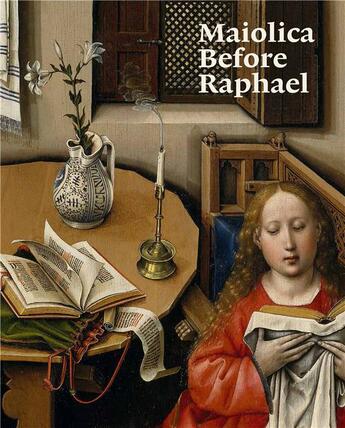Des idées de lecture pour ce début d'année !
Passionné(e) de lecture ? Inscrivez-vous
gratuitement ou connectez-vous pour rejoindre la
communauté et bénéficier de toutes les fonctionnalités du site !

High Renaissance maiolica, produced in Italy in the orbit of Raphael and other artists, is widely known and has been extensively studied.
This istoriato, or narrative, maiolica graces the collections of many of the world's greatest museums. But not for almost 100 years has attention been focused on magnificent works that preceded it in the 14th and 15th centuries, which were at times prized by contemporary patrons more highly than precious metals.
Maiolica before Raphael refocuses the spotlight of contemporary scholarship onto the birth of design in Italian maiolica, and its evolution from c. 1350 up until 1500. It was during this formative period that its characteristic tin-based glaze, with the pure and brilliant white surface it offered the late-medieval potter, engendered some of the most rapid and exciting innovations in all ceramic art. Potters began to decorate the surfaces of their earthenware vessels (of an increasingly varied spectrum of shapes and forms) with squirming, meticulous designs of unparalleled ingenuity and expression that incorporated multisensory influences from luxury contemporary textiles, metalwork, and exotic lustreware from Islamic Spain.
Presenting over forty rare objects from the foremost centres of production that have survived in private hands, this catalogue explores the spread and evolution of the medium, as well as the history of collecting and the changing taste for Italian pre-Renaissance pottery in the modern era.
Il n'y a pas encore de discussion sur ce livre
Soyez le premier à en lancer une !

Des idées de lecture pour ce début d'année !

Si certaines sont impressionnantes et effrayantes, d'autres sont drôles et rassurantes !

A gagner : la BD jeunesse adaptée du classique de Mary Shelley !

Caraïbes, 1492. "Ce sont ceux qui ont posé le pied sur ces terres qui ont amené la barbarie, la torture, la cruauté, la destruction des lieux, la mort..."